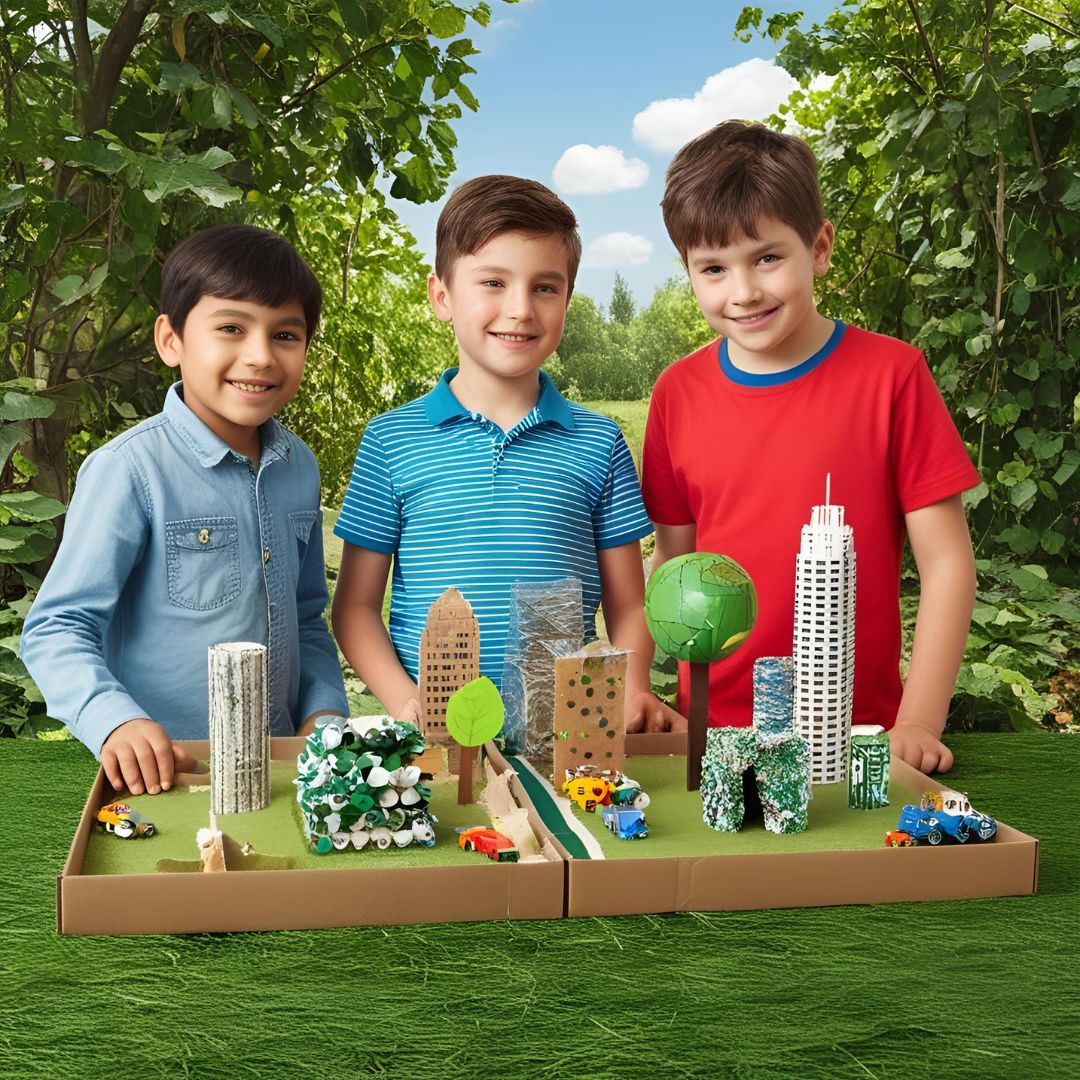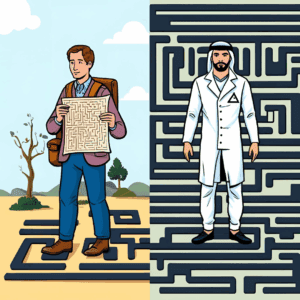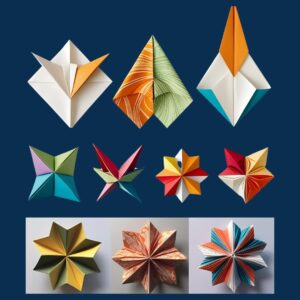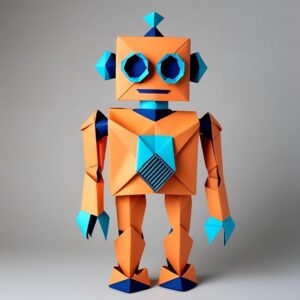Creating a mini eco-city with children using recycled materials is an educational and engaging experience that combines fun with environmental awareness. This hands-on activity turns playtime into a powerful learning tool, encouraging children to think about the planet’s future and the sustainable solutions that can be applied to cities.
The idea of building a mini sustainable city with reused elements is ideal for educational projects, school workshops, environmental learning spaces, and as a creative option for free time at home. Through this practice, children develop a sense of sustainable urban planning, learn the importance of recycling, and are encouraged to use their imagination in a critical and purposeful way.
How to Use Recycled Materials to Build a Sustainable City with Children
Gathering recyclable materials for the construction of the mini eco-city is the first step. Cardboard boxes, paper rolls, bottle caps, plastic containers, various packaging, fabric scraps, and old newspapers can be transformed into houses, schools, hospitals, parks, bike lanes, and public transport systems. Natural elements like small stones, dry leaves, and twigs can also be included, further connecting the city to the idea of nature integration.
Building the mini eco-city should follow basic principles of urban sustainability. Children can be encouraged to think, for example, about streets with less car traffic, safe bike paths, accessible green spaces, community gardens, and recycling stations. These ideas are applied in practice, with each structure representing a key environmental and social value.
Teaching Sustainable Urbanism in a Fun and Accessible Way
The concept of a sustainable city may seem complex at first, but it becomes easily understandable when introduced through play. Constructing a mini eco-city using recycled materials allows topics such as urban mobility, public space use, tree planting, and conscious consumption to be addressed naturally, sparking genuine interest in children.
You can simulate a park with playgrounds made of bottle caps and cardboard, build a bus stop using milk cartons, and create signs with eco-friendly messages. Each structure leads to conversations about how a city works and what changes are needed to make it healthier, safer, and more inclusive for everyone.
Promoting Environmental and Social Values Through Creativity
When building a mini eco-city with recycled materials, children also engage with values like community, empathy, cooperation, and social-environmental responsibility. They learn that a city is not just made up of buildings and roads, but is a space where people live, interact, and share resources.
This activity encourages critical thinking, allowing children to reflect on how cities are currently structured and what practices can be reimagined. At the same time, it nurtures creativity and fine motor skills, as the assembly of elements involves planning, cutting, gluing, and painting.
Creating a Mini Eco-City is a Transformative Environmental Education Activity
Throughout the creation process, multiple skills and competencies can be worked on—such as scientific thinking, cultural knowledge, argumentation, and empathy—all aligned with educational standards like the Common Core. The use of recycled materials reinforces the importance of reusing and reducing waste, showing that even small actions can make a big difference.
In school environments, the mini eco-city can serve as an interdisciplinary project involving science, geography, art, and math. Children can measure spaces, calculate distances between buildings, reflect on the environmental impact of certain choices, and even create comic book stories featuring characters who live in the sustainable city.
Tips to Engage Children in Building a Sustainable Mini Eco-City
One of the best ways to engage children in building the mini eco-city is to give them creative freedom. Instead of offering ready-made models, it’s best to suggest ideas and let them propose solutions, even if they initially seem unworkable. This process is key to fostering autonomy and innovative thinking.
It also helps to relate the project to real-life situations. Ask them what a city would be like where people use more bicycles, where there are more trees than cars, or where every child has a school nearby. Their answers can be surprising and lead to valuable ideas for implementation.
Additionally, creating a mini sustainable city with recycled materials can be a wonderful opportunity to involve the whole family. Parents, grandparents, and older siblings can contribute ideas, help collect materials, and participate in the construction, turning the moment into a shared educational and emotional experience.
Planting Sustainable Habits in Childhood
Childhood is a crucial time for building values that last a lifetime. By introducing activities that promote environmental awareness and sustainable urbanism, we contribute to the development of more conscious, compassionate citizens who are engaged in creating a better future for the planet.
When a child helps build a mini eco-city, they’re doing more than playing—they’re learning to care for water, protect trees, reduce plastic use, support public transportation, and promote collective well-being. These lessons are deep and lasting, especially when experienced in meaningful and practical ways.
Mini Eco-City with Recycled Materials as a Tool for Change
Turning waste into creative possibilities is both an act of environmental resistance and a gesture of hope. With cardboard, bottles, caps, and other everyday items, it’s possible to build more than just a model—it’s a vision of a better city. This fun and educational activity is a powerful tool for shaping a new generation that is aware and ready to face environmental challenges.
The idea of creating a mini eco-city with children using recycled materials is much more than a craft project. It’s a way to teach, inspire, and plant the seeds of sustainability from an early age.













